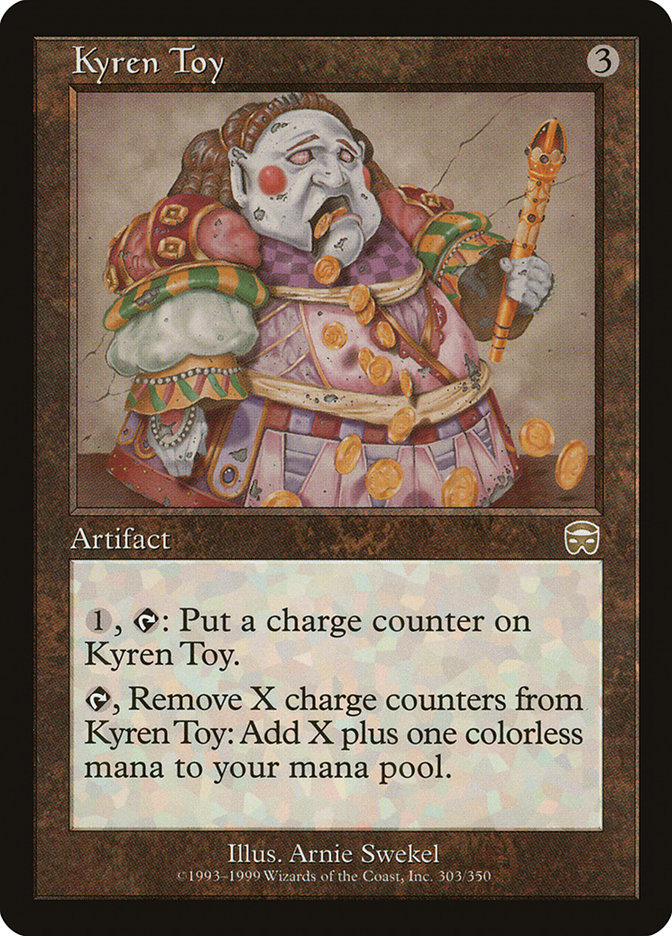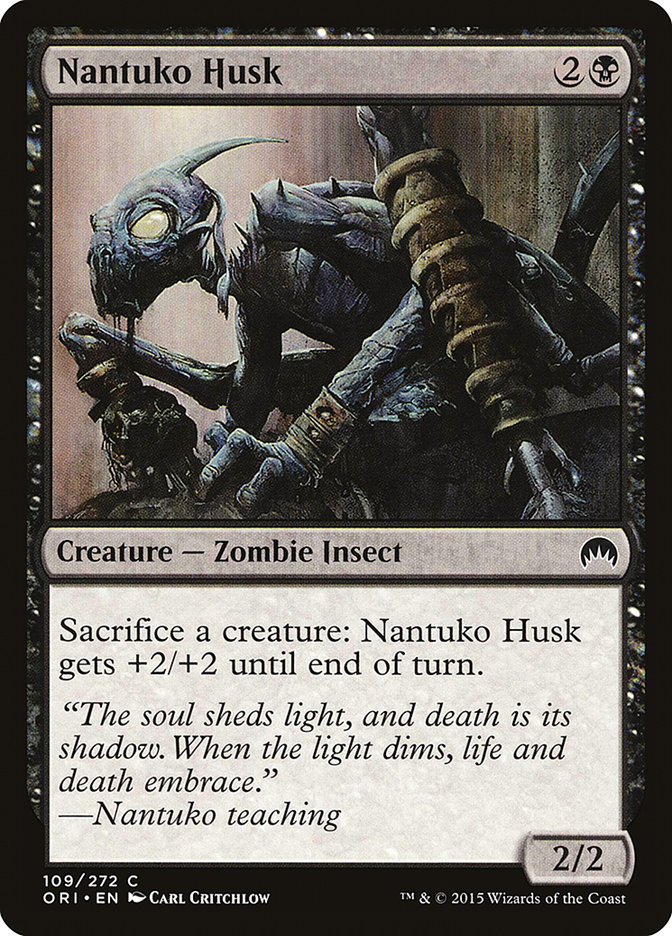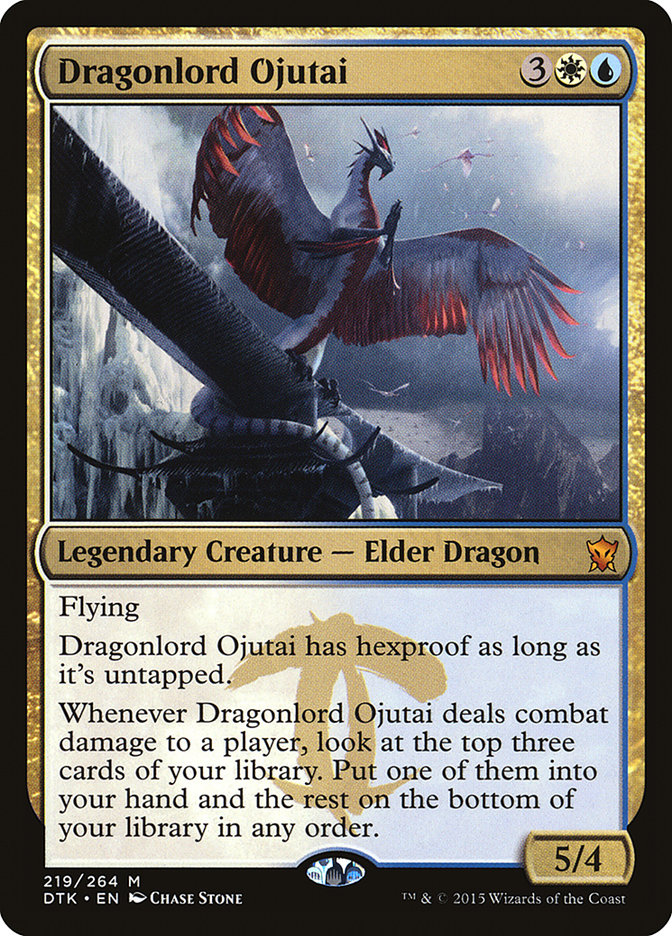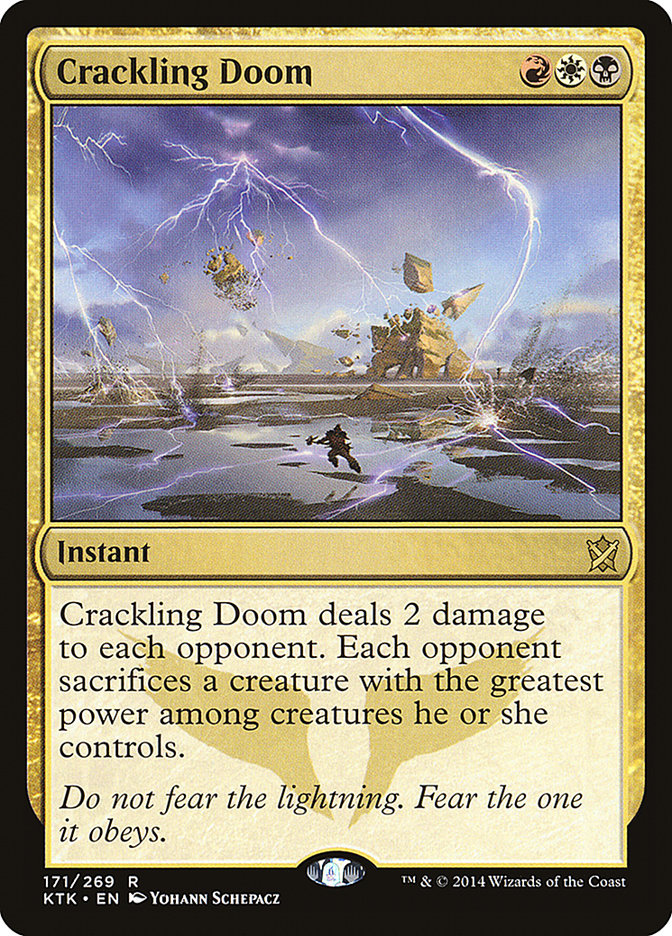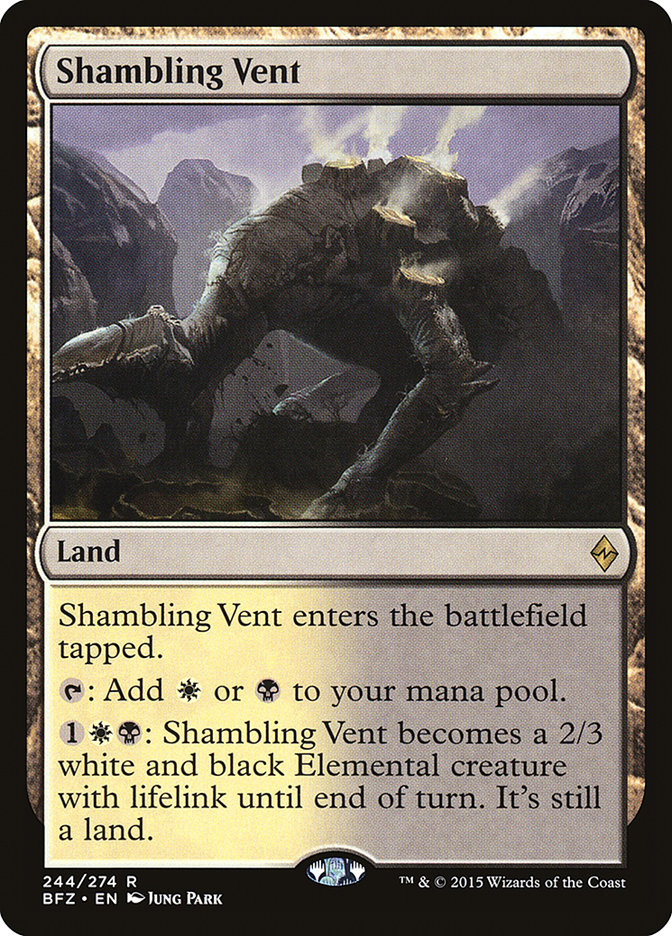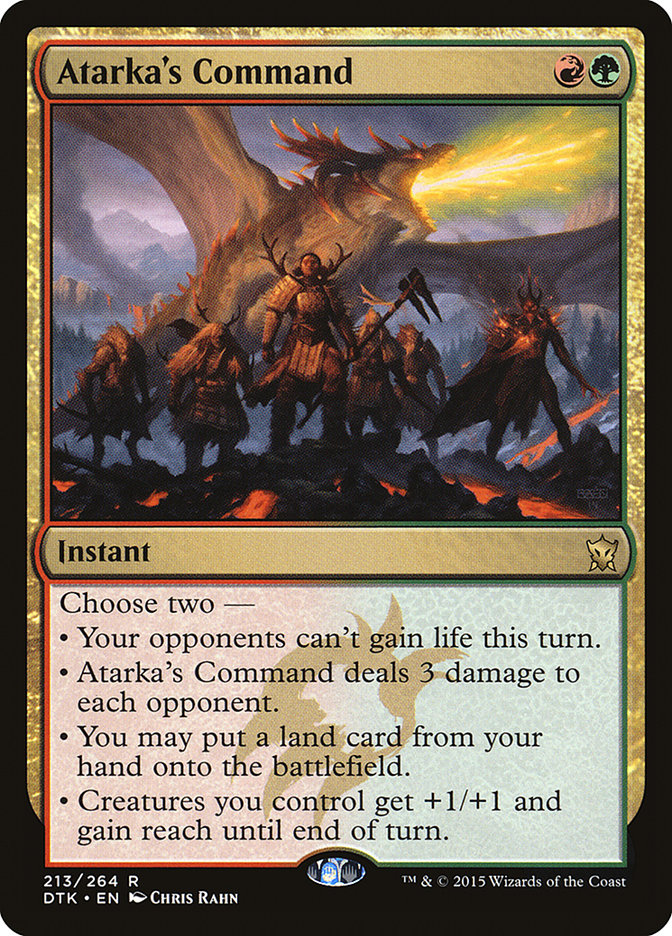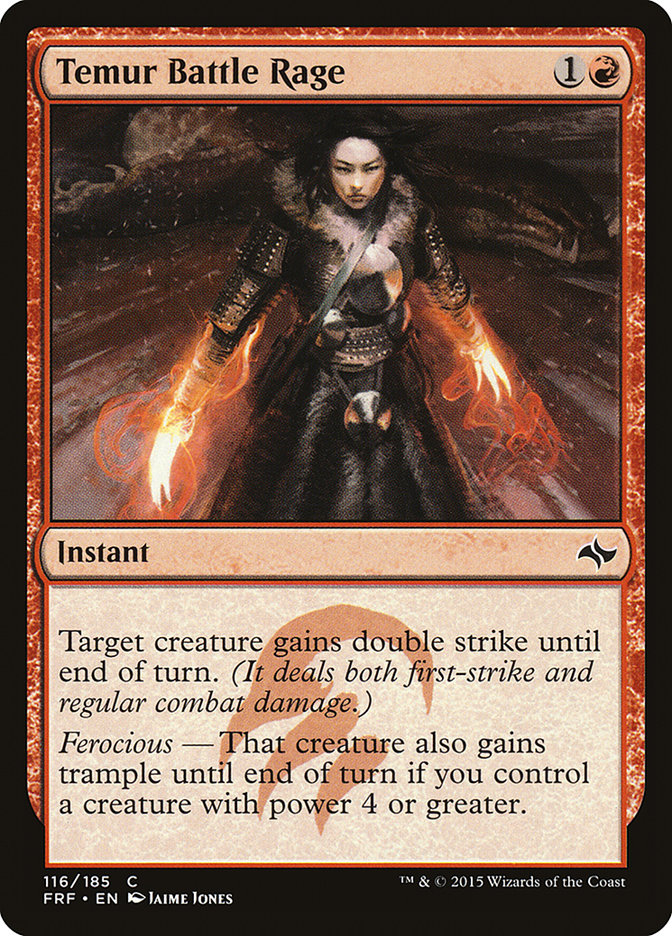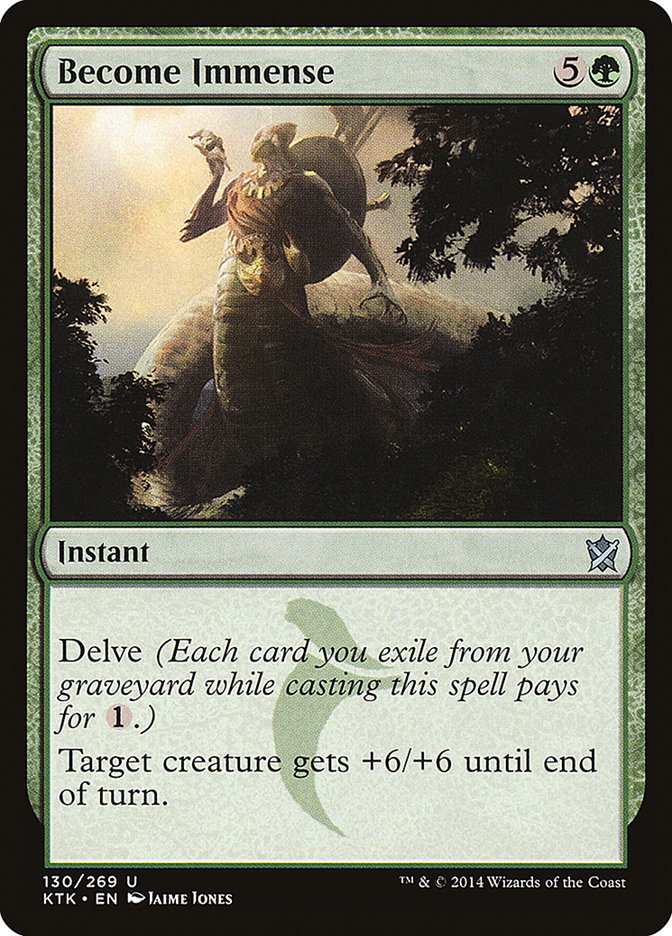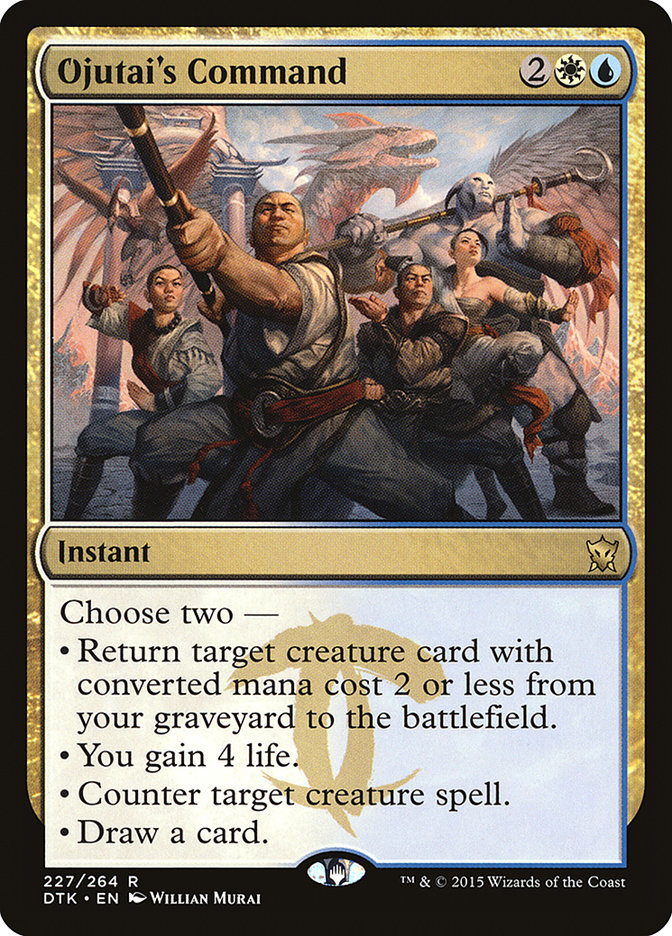If one thing is generally true, it is this: the Pro Tour sets the stage, but it rarely defines the top of the field moving forward in Standard.
One of the first reasons that it works this way is simple: time. There is simply not enough time to figure out all of the decks, at least for most groups.
For example, for #PTMagicOrigins, Team UltraPro did not figure out the existence of U/R Thopters, and for #PTBFZ, Team Mad Apple (the Madison/NYC team I
helped found) did not have a version of Eldrazi Ramp that looked anything like the typical lists.
There really is an incredible short amount of time to attempt this. The next Prerelease is the weekend of January 16, and three weeks later the Pro Tour is
underway. This is plenty of time to be able to make a deck; it is a challenge to be able to use this time to figure out the entirety of a format
that is as changing as Standard. Thankfully, for the next Pro Tour, things will be a bit less complicated, given that the format will be Modern, and there
will be more stable ground to work on.
This abbreviated mark in time often means that decks that emerge simply fade away. It’s not that these decks were bad, per se, but rather that these decks
were only good enough when the field itself hadn’t developed as fully as it would. Take Sam Black’s Bant Tokens list from the last Pro Tour: it performed
very well for the several people who played it, but has largely faded from existence since. In my own history, I’ve had a lot of successes in the old PTQ
season playing decks on Week 1 to a win, but then having the deck simply not be good enough to continue onwards once the format was explored.
For example.
#GPIndy is a good indication of a much more developed metagame since the Pro Tour. Here is that Top 8:
2 Abzan
1 Abzan Blue
1 Bant Megamorph
1 Bant Hardened Scales
1 Esper Control
1 Esper Tokens
1 R/G Landfall
The deck that would win? A nearly card-for-card replica of the Pro Tour winning list. This in itself was interesting because typically Pro Tour decks don’t
have the legs you’d think. The winner of #PTBFZ, for example, had a fairly weak Standard record going into the Top 8. This doesn’t mean the deck he played
was “bad,” just that it has less evidence going for it being an exemplary deck. Clawson’s win in Indy speaks a little more to the possibility of the deck
being great. If we move outwards to the Top 32, we get a slightly bigger picture of the top-end metagame:
10 Abzan
6 Jeskai Black
3 Eldrazi Ramp
3 Esper Tokens
2 Esper Control
1 Atarka Red
1 Bant Megamorph
1 Bant Hardened Scales
1 G/W Megamorph
1 R/G Landfall
1 W/B Aggro
Ah, but, oh what a difference a week makes.
Abzan was represented by three decks in the Top 8 of #GPIndy, and this certainly put a target on it for #GPBrussles. Here is the Brussels Top 8:
2 Abzan
2 Esper Dragons
1 Atarka Red
A deck that was barely present the previous week has the big showing this week. It didn’t win, but then again, it was not only the most represented deck of
the Top 8, it was also the most winning deck of the tournament, at least, if we’re talking about Average Match Wins.
Here are how all of the decks performed by the end of the tournament:
Decks with 15 Match Wins
1 Esper Dragons
Decks with 14 Match Wins
1 Atarka Red
Decks with 13 Match Wins
2 Abzan
Decks with 12 Match Wins
11 Abzan
4 Esper Dragons
2 Atarka Red
2 Jeskai Black
2 R/G Landfall
1 Bant Megamorph
1 Bant Tokens
1 Esper Control
To me this lends some credence to Simon Nielsen’s claim of a roughly 90% win percentage versus Abzan. Now, normally, when you hear a claim like this, it is
worthy of being suspected as false. However, just because someone is claiming such a percentage, it doesn’t make it false. A 65% game 1 and an 85% game 2
make for just under 90% for a match, by the numbers. While it is more likely that a 90% claim is incorrect, Nielsen’s team went 23-1 versus Abzan at the
event, considerably higher than 90%; even granted that they also were unlikely to play against players as skilled as they were, overall, this is
still impressive.
So what does their version of Rally the Ancestors look like?
Creatures (28)
- 4 Nantuko Husk
- 4 Elvish Visionary
- 4 Grim Haruspex
- 4 Sidisi's Faithful
- 4 Jace, Vryn's Prodigy
- 4 Catacomb Sifter
- 4 Zulaport Cutthroat
Lands (21)
Spells (11)
Sideboard

If you haven’t played against this deck, it can be somewhat hard to imagine what the deck is doing exactly. Between Catacomb Sifter and Grim Haruspex, the
deck is able to push deeper into the library to be able to find a Rally the Ancestors. Elvish Visionary and Jace, Vryn’s Prodigy can also do work in that
regard. Then, either an unblocked Nantuko Husk will create a kill, or multiple Zulaport Cutthroat will, with lifegain triggers happening off of the dying
of your creatures. Jace doesn’t have very many targets to work with, but sometimes Jace is able to facilitate a kill by creating more opportunities for
several Rally the Ancestors to be cast in a single turn.
Whether or not Abzan is the best deck, the fact remains that it is an incredibly popular deck. If you’re coming to the party with a deck that sports such a
high win percentage versus Abzan, it is pretty remarkable. Only Anafenza, the Foremost is a reliable way to fight the deck, and even then, maindeck
Sidisi’s Faithful and sideboard Murderous Cut and Valorous Stance make that plan much less effective.
Without practice, though, you are essentially running a deck full of dorks. If you don’t know how to string together the right plays, you really do have a
particularly anemic collection of creatures. Do you sacrifice a creature to a Husk or a Faithful before you’re able to go off? These are the questions that
require a great deal of practice.
This may have been the breakout deck of the tournament. How will it fare, though, once the target has been placed on it? It wasn’t as though the
previous “top deck”, Abzan, disappeared from this event. It was absolutely the most represented deck at the top of the tables, even if it failed to break
through to the Top 8 like its representation might lead us to believe.
Likely, this means that the deck was a great safe choice but wasn’t prepared for the other top decks of the room. One of those decks looking forward to the
Abzan opponent was the eventual winner of the event, Esper Dragons.
Creatures (9)
Lands (21)
Spells (30)

In a world without Crackling Doom, Esper Dragons begins to look like a monster. Blohon beat Nielsen in the finals, in part due to an early Infinite
Obliteration in the last game.
More importantly, though, he played against Rally three times in the Top 8, dispatching each in fairly convincing fashion. While Ondrej Strasky,
also playing Esper Dragons, was defeated by Simon Nielsen, the matchup does look to be in the favor of Esper, if in part because of the relative few
numbers of truly powerful cards to come from the Rally side of the equation and the need to fight against actual counterspells, not to mention Duress.
One of the scariest things that can happen for a deck that is opposing a deck with counterspells is to have that deck refill the hand, whether that is with
a Dig Through Time or through the effect of OJ–Dragonlord Ojutai. Once this happens for the first time in a game, if you’re only barely hanging on, it
doesn’t take much for the game to lock out.
Personally, I’ve been spending quite a bit of time working on Esper Dragons recently, but I wasn’t sure if I was just a little crazy to be doing so. A big
part of the fear in playing a deck like this is simply losing a Dragon to Crackling Doom.
Thankfully for Esper Dragons, as the metagame has developed, Jeskai Black has largely disappeared from sight. Mardu, while technically a deck that exists,
is so incredibly rare these days, it isn’t a common sight. Abzan Red also technically exists, but, again, in such small numbers, Crackling Doom isn’t a big
part of what you’d expect to fight against. My own plan had been to consider maindeck Dispel or Stubborn Denial, but perhaps such measures are completely
unnecessary, though if Crackling Doom comes back, perhaps this will be a nice move for the deck.
Creatures (22)
- 4 Heir of the Wilds
- 4 Anafenza, the Foremost
- 2 Wingmate Roc
- 4 Siege Rhino
- 4 Warden of the First Tree
- 4 Den Protector
Planeswalkers (3)
Lands (22)
Spells (13)

This build is slightly different than the #GPIndy list. Instead of running a fourth Gideon, Ally of Zendikar and three Hangarback Walker, Van Etten is
running four copies of Heir of the Wilds. This is a much more aggressive position, which makes the choice quite interesting.
A part of what has been happening in the metagame, though, is simple: Hangarback Walker is abundantly prepared for. Whether it is Complete Disregard,
Stasis Snare, Utter End, Silkwrap, Abzan Charm, Sidisi’s Faithful, opponents’ Anafenza, the Foremost, or some other choice, Hangarback Walker is just
living in a world that is very, very antagonistic to it. Laying a creature that can be ready to attack immediately, often for three on turn 3, can be an
important part to supplementing a strategy that involves ignoring all of the cleverness of a Hangarback Walker in favor of just smashing face.
None of these builds appear to be going full in on this plan. We still are seeing choices like four Shambling Vent which are certainly more reasonably
associated with an eye for a long game.
One of my favorite things in the sideboard of this deck is the choice to include three Transgress the Mind. Add this to Duress and a full set of Den
Protector, it actually feels like the deck can provide some real difficulty for the potential nightmare of Eldrazi Ramp, not to mention anything that is
simply slower and more controlling. This, of course, won’t stop a deck like Eldrazi Ramp from ruining your world with a topdeck, but hopefully, Abzan Charm
will be around with sufficient mana to take Ulamog out of the picture. Of course, an Ugin is a different picture, but it may be an answer in search of a
problem: while Indianapolis had a handful of Eldrazi Ramp decks in the mix, they were completely absent from the top end of Brussels, with zero
copies of the deck managing twelve match wins.
Creatures (14)
Lands (12)
Spells (34)

This list almost feels out of place in the top 8. Atarka Red not only had only a single representative in the top of the field but if we drop down to the
32 players with twelve match wins and better, there were six copies of Atarka Red and R/G Landfall combined.
This set of three cards are capable of creating some truly frightening games of Magic. On the other hand, I remember watching a friend of mine playing
these cards versus Jeskai Black and simply being torn up by a combination of Fiery Impulse, Radiant Flames, and Jace, Vryn’s Prodigy, followed up by first
one, then two Mantis Rider.
Atarka Red is less single-minded than R/G Landfall, and it has a better ability to exploit Monastery Swiftspear because of its token production. In the
prep leading into #PTBFZ, I suspected that this meant that Atarka Red was the better of the two decks, though I didn’t have enough data one way or another
to support that, and I wanted to
avoid outthinking the situation, a weakness I’m prone to.
One of my favorite things about any build of a Become Immense deck is the constant threat of death that the deck can put on the opponent. Worse for them,
if you don’t have the kill, and they continue to slow-play around the knockout punch, they can set you up for the ability to get in more damage
the conventional way.
Still, this macro-archetype (rolling Atarka’s Command decks altogether) is less than 20% of the metagame. Maybe it should be more, but for now,
the world is mostly gunning for other things.
After we take out those four archetypes from the Top 8, what other archetypes even remain in the Top 32?
It turns out, not much:
2 Jeskai Black
1 Bant Megamorph
1 Bant Tokens
1 Esper Control
Only 15% of the winning metagame is something “other” than the Top 8. Let’s do the same exercise for #GPIndy and see what we get:
6 Jeskai Black
3 Eldrazi Ramp
1 G/W Megamorph
1 W/B Aggro
40%
of the winning metagame was something other than the Top 8.
The world is shrinking my friends.
Perhaps with the ascendancy of Esper Dragons, we will see a return to Jeskai Black, but overall, I think we have our new metagame:
Tier 1:
Esper Dragons
Abzan
Atarka Red
Tier 2:
R/G Landfall
Jeskai Black
So what should you play in Kansas City?
I won’t be in #SCGKC this weekend, but if I were, you can bet I’d be playing either Atarka Red or Esper Dragons. Alas, for my poor Esper Demons, I think
enough things have happened that make me think now is not the time.
Best of luck to everyone competing this weekend!

